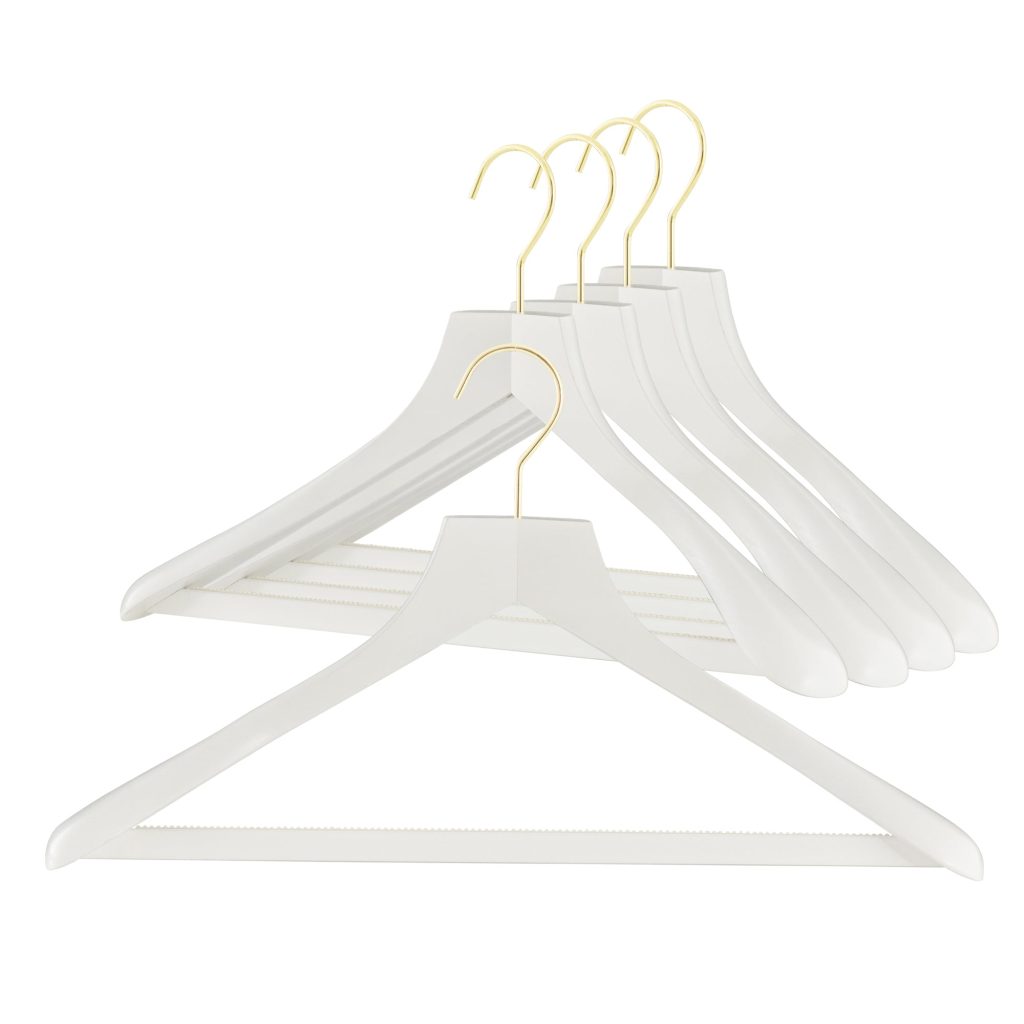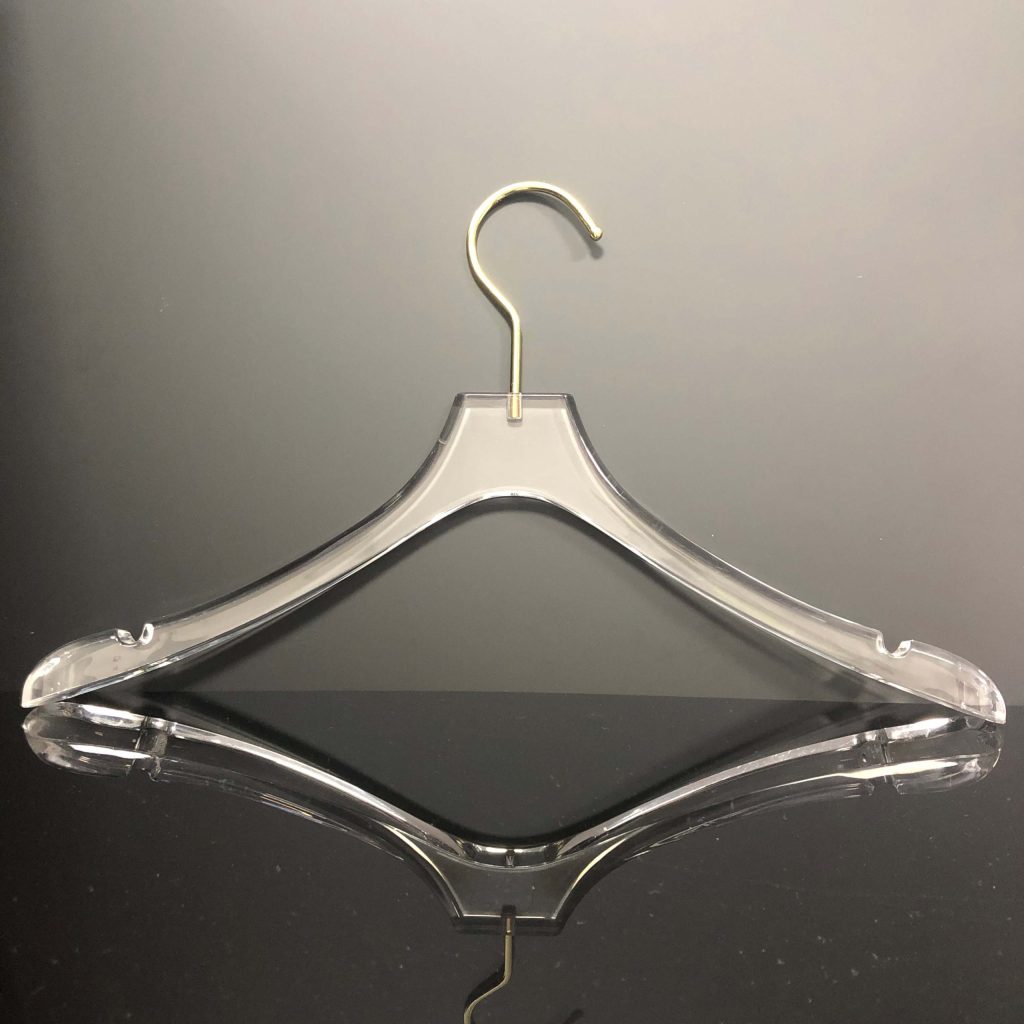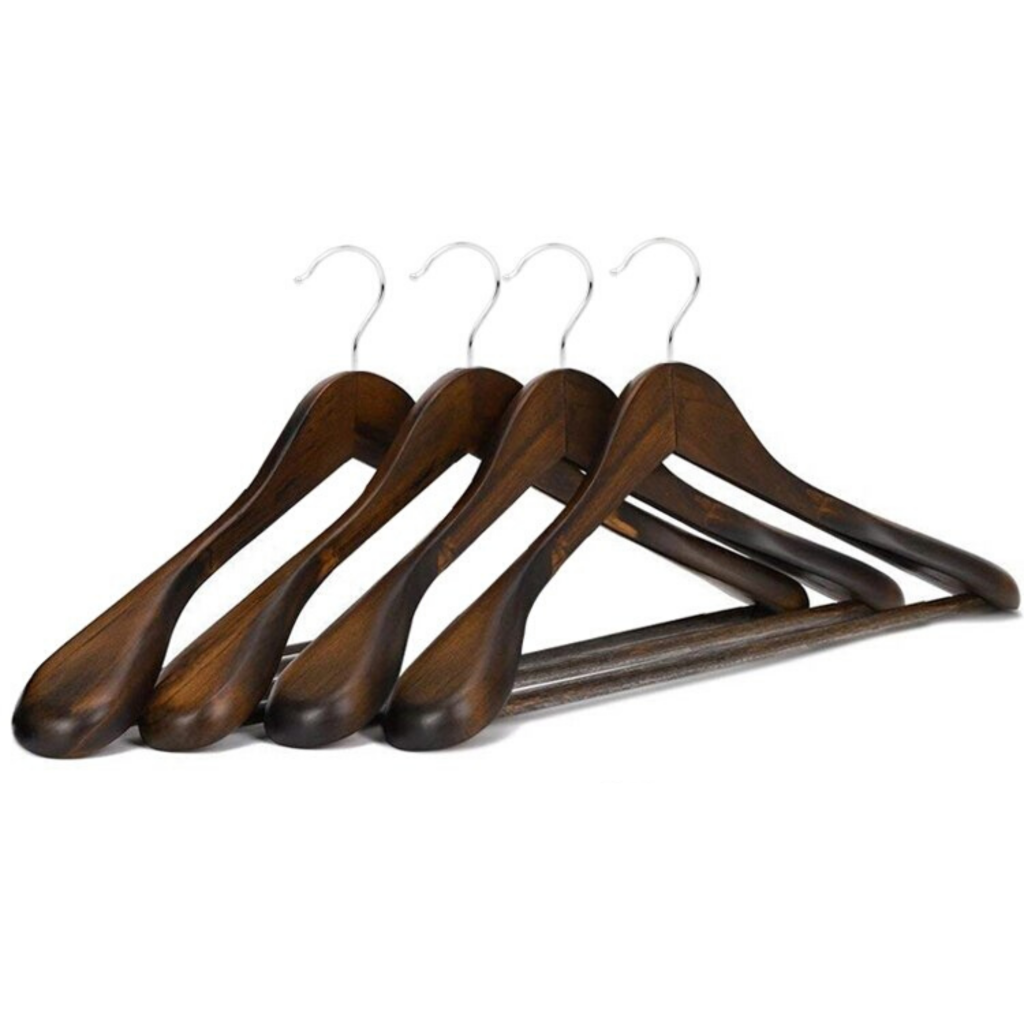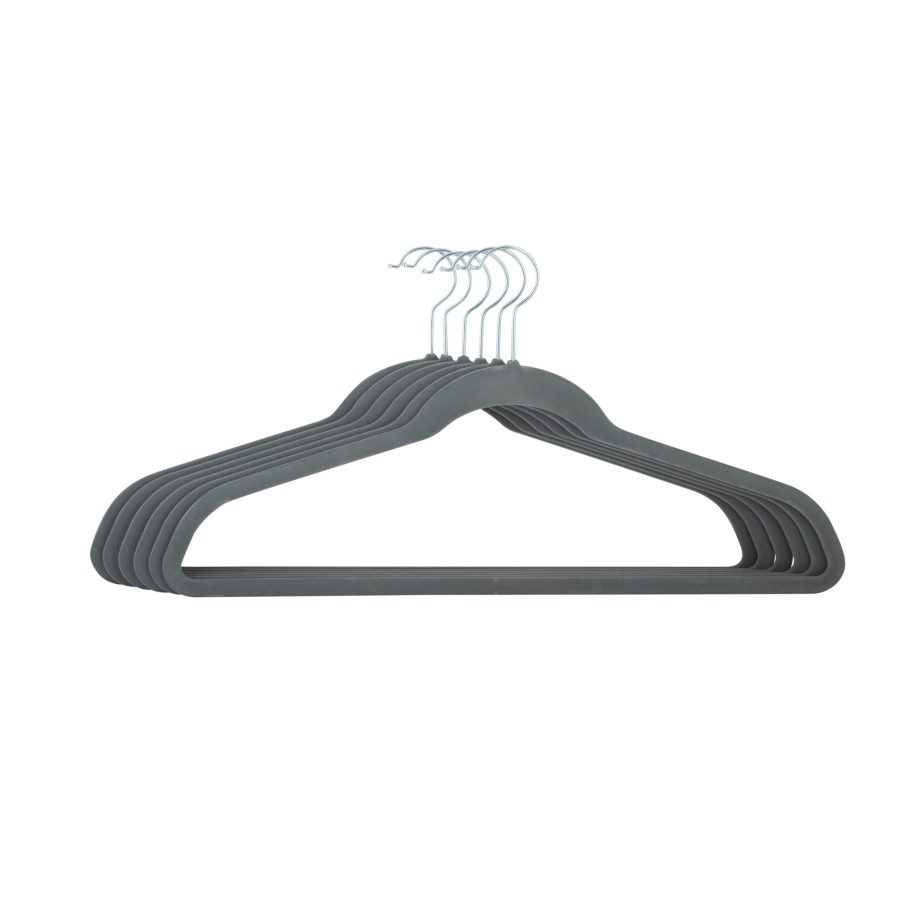Introduction
How wide is a hanger – Clothes hangers are an indispensable part of our daily lives, serving the essential function of keeping our garments organized, wrinkle-free, and ready to wear. With the myriad of clothing styles and sizes available, it’s crucial to understand the standard width of clothes hangers to ensure that your wardrobe is well-maintained and your closet space efficiently utilized. This guide delves into the nuances of clothes hanger widths, their importance, and factors to consider when choosing the right hangers for your clothing.

Why Hanger Width Matters
The width of a clothes hanger directly impacts how well it supports your garments. An inadequately sized hanger can lead to stretched necklines, misshapen shoulders, or even damage delicate fabrics. Properly fitting hangers keep clothes in their intended shape, preserving their quality and extending their lifespan.
Standard Width Measurements
- Adult Hangers: For most adult clothing, the standard width ranges from 17 to 19 inches (43 to 48 cm). This measurement caters to average-sized shirts, blouses, and jackets, ensuring that shoulder seams align correctly with the hanger’s width.
- Children’s Hangers: These are typically narrower, averaging around 13 to 15 inches (33 to 38 cm) to accommodate smaller garments. The size should be adjusted based on the child’s age and clothing size.
- Specialty Hangers: For items like coats, suits, or dresses with wider shoulder spans, hangers can measure up to 22 inches (56 cm) wide or more. These wider designs provide ample support without causing deformation.
Factors Influencing Hanger Width Choice
- Garment Type: The type of clothing you plan to hang significantly influences the hanger width needed. Delicate fabrics or tailored pieces require more precise sizing to avoid damage or distortion.
- Closet Space: Limited closet space might necessitate slimline hangers, which are thinner but still maintain adequate width for garment support, optimizing storage capacity.
- Material & Construction: Wooden hangers tend to be sturdier and often wider, making them ideal for heavier garments. Plastic and wire hangers can be narrower but may not provide sufficient support for structured clothing.
Choosing the Right Width
- Measure Your Garments: Before purchasing hangers, measure the shoulder span of your clothes to ensure a proper fit.
- Consider the Weight: Heavy garments like coats need wider and sturdier hangers to distribute the weight evenly.
- Versatility vs. Specialization: While specialized hangers designed for specific clothing items are great, versatile hangers that can accommodate a range of garments can be more practical for those with limited storage space.
Maintaining Closet Organization
Using consistently sized hangers throughout your closet not only looks aesthetically pleasing but also maximizes space efficiency. It allows for neat, uniform hanging lines, making it easier to see and access all your clothes.

Why Does Hanger Width Matter?
The width of a clothes hanger directly impacts how well it supports and preserves the shape of your garments. Choosing hangers with appropriate width ensures that your clothes hang properly without stretching or becoming misshapen over time.
Standard Width of Clothes Hangers
The standard width of clothes hangers varies depending on the type of hanger and the clothing it’s designed to support:
- Adult Hangers:
- Regular Clothing: The width of a standard adult hanger for regular clothing is typically around 16 to 18 inches (40.6 to 45.7 cm). This width is suitable for most shirts, blouses, dresses, and jackets.
- Suit Hangers: For suits and tailored jackets, the width of the hanger is usually slightly broader, ranging from 17 to 19 inches (43.2 to 48.3 cm). This extra width helps to maintain the shoulder structure and prevent wrinkles.
- Specialty Hangers:
- Coat Hangers: These are wider, often between 18 to 20 inches (45.7 to 50.8 cm), to adequately support heavy coats and outerwear.
- Padded Hangers: Designed to prevent delicate fabrics from slipping or getting creased, padded hangers may vary in width depending on their padding thickness, typically ranging from 15 to 17 inches (38.1 to 43.2 cm).
- Skirt and Pants Hangers: These hangers usually have clips or adjustable bars to accommodate various widths of skirts and pants, typically around 12 to 14 inches (30.5 to 35.6 cm) wide.
Importance of Choosing the Right Width
Choosing hangers with the appropriate width is essential for several reasons:
- Maintaining Shape: Hangers that are too narrow can cause clothing to stretch or lose its shape over time, especially at the shoulders.
- Preventing Wrinkles: Properly sized hangers help garments to hang correctly, reducing the likelihood of wrinkles.
- Supporting Heavy Clothing: Coats and heavier garments require wider hangers to support their weight and prevent distortion.
- Enhancing Closet Organization: Uniform hanger widths create a neat and organized appearance in your closet, making it easier to find and access your clothes.
Tips for Using Hangers Effectively
- Matching Hanger Types: Use suit hangers for suits, shirt hangers for shirts, and so on, to ensure proper support and preservation.
- Avoid Wire Hangers: Wire hangers are often too narrow and can leave impressions on clothing shoulders. Opt for wooden, plastic, or padded hangers instead.
- Adjustable Features: Consider hangers with adjustable clips or bars for hanging skirts, pants, or strapless garments to avoid creasing or stretching.
Maintaining Your Hangers
- Cleaning: Periodically wipe down hangers with a damp cloth to remove dust and maintain their appearance.
- Storage: Store hangers neatly to prevent them from becoming tangled or damaged, which can affect their effectiveness over time.

Standard Dimensions
1. Plastic Hangers
Plastic hangers are among the most common due to their affordability and versatility. A typical adult-sized plastic hanger measures approximately 17-18 inches in width from tip to tip. This width comfortably accommodates shirts, blouses, and light jackets without causing stretching or slipping.
2. Wire Hangers
Wire hangers, often associated with dry cleaning services, are thinner and less bulky. They usually measure around 15-16 inches in width. While not ideal for heavier garments due to their flimsiness, they work well for lighter items like shirts when closet space is limited.
3. Wooden Hangers
Wooden hangers, known for their elegance and durability, are wider than their plastic and wire counterparts to provide better support for clothing. A standard wooden hanger for suits or coats typically spans 18-20 inches in width, with broad shoulders that help maintain the garment’s shape and prevent creasing.
4. Specialty Hangers
For items like pants, skirts, or delicate fabrics, specialty hangers come in various widths tailored to their specific needs. Pant hangers, for instance, might be 9-12 inches wide with clips to hold the waistband, while padded hangers designed for delicate items like silk blouses can be up to 19 inches wide to avoid leaving marks.
Why the Width Matters in Closet Organization
Efficient closet organization goes beyond just tidiness; it also helps preserve your clothes and maximize usable space. Choosing hangers with appropriate widths allows you to:
- Optimize Space: Wider hangers for bulky items ensure they hang properly without taking up more space than necessary, while narrower hangers for lightweight clothes save on closet real estate.
- Prevent Damage: Correctly sized hangers prevent stretching, sagging, or deformation of garment shoulders, preserving the integrity and fit of your clothes over time.
-
Enhance Visual Appeal: Uniformity in hanger sizes contributes to a visually pleasing and organized closet, making it easier to find what you’re looking for and adding a touch of sophistication.
Conclusion
Understanding the standard width of clothes hangers and selecting the appropriate size is fundamental to maintaining your wardrobe’s integrity. Whether you’re organizing a small closet or managing a vast collection of garments, investing in the right hangers can make all the difference in preserving your clothes’ shape, extending their life, and optimizing your storage space. By considering the factors mentioned above and carefully measuring your garments, you can make informed decisions that will keep your wardrobe looking its best.


